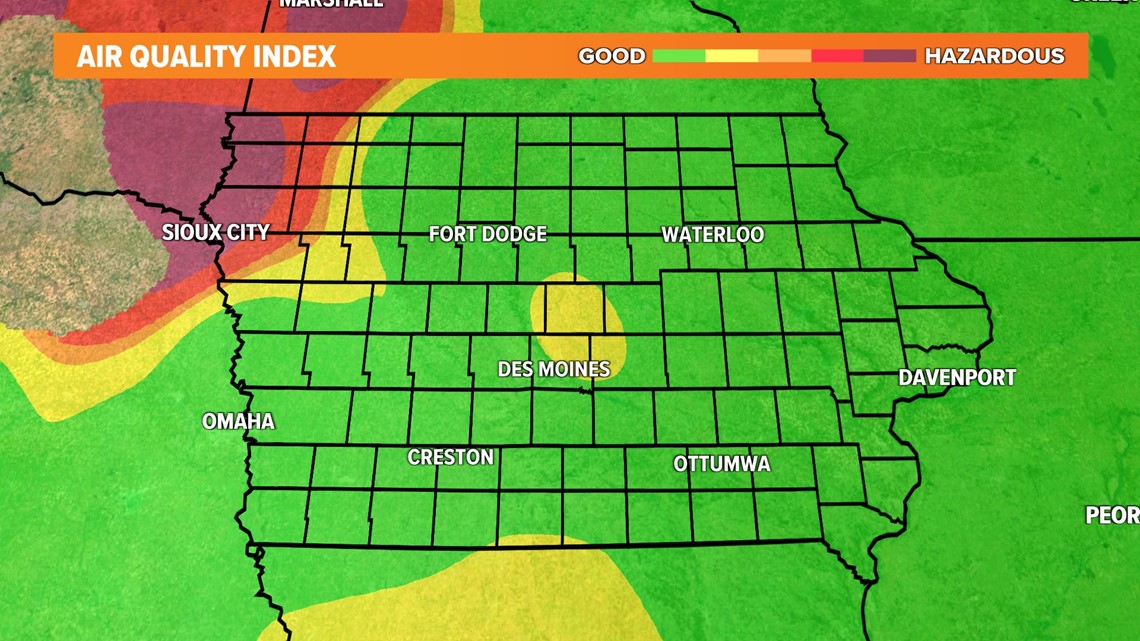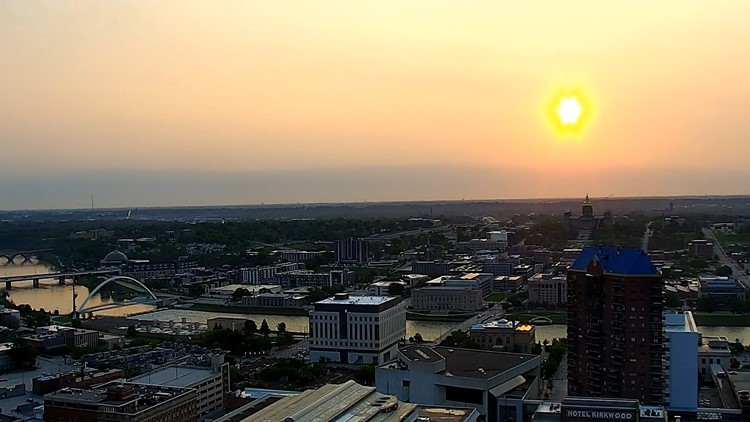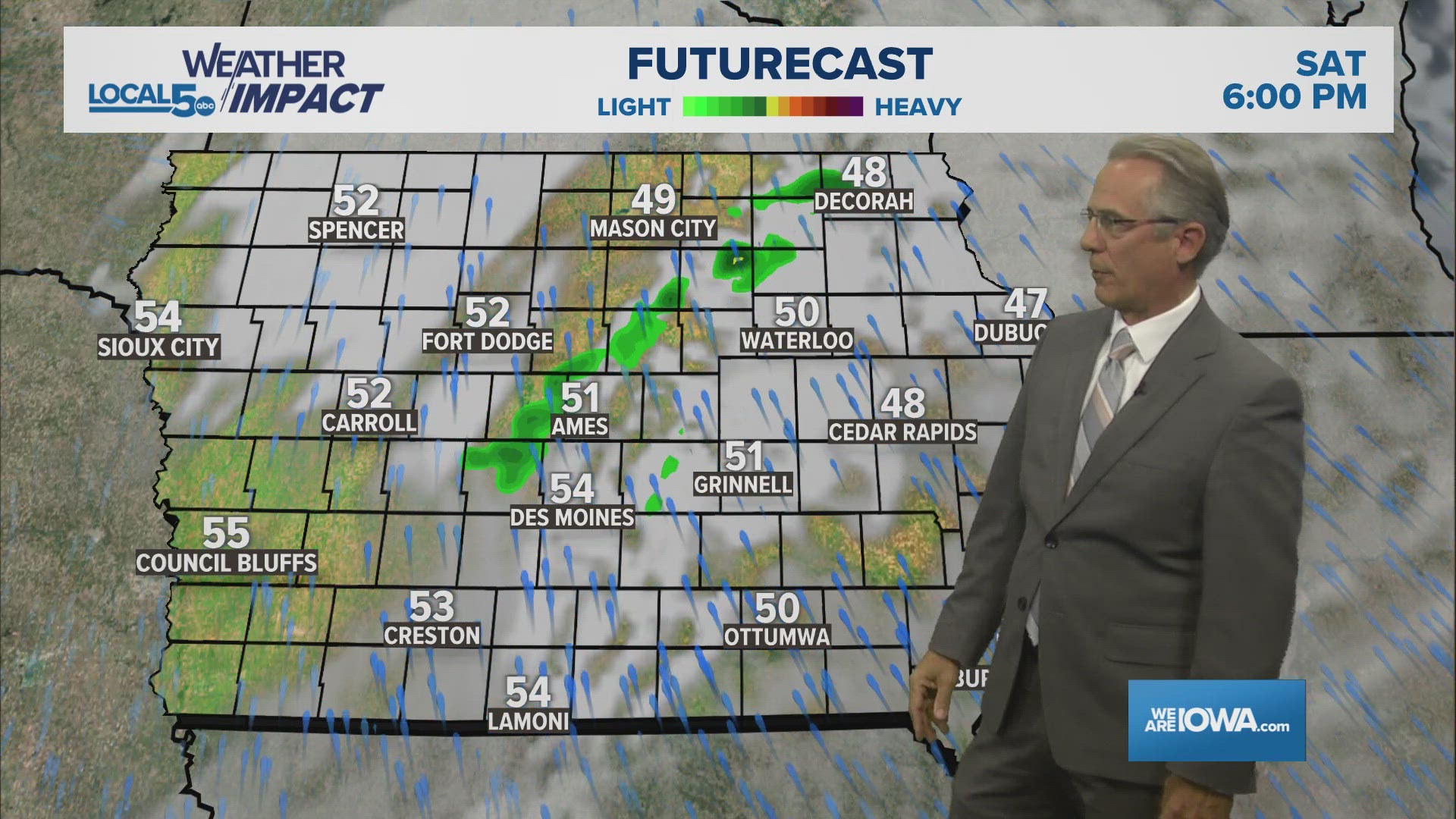DES MOINES, Iowa — Smoke from wildfires burning in Canada spread across Iowa skies on Thursday, May 18, leading to reddish hues at sunrise and sunset, and filtered sunshine through much of the day.
The smoke will remain overhead throughout Thursday, but an incoming cold front could push some of the smoke closer to the ground, potentially leading to lower air quality and reduced visibility for some areas.
Concern for smoke near the surface will be highest on Thursday evening into Friday morning, especially for Iowa communities north of I-80.
Northern Iowa will have the greatest threat of near-surface smoke later on Thursday.
People with heart and lung disease, as well as those with cardiovascular and respiratory issues should consider limiting their time outdoors.
As of 8 a.m. Thursday, northwest Iowa already reported lower air quality thanks to the smoke, and much of northwestern Iowa, western Minnesota, South Dakota and North Dakota had reported hazardous to dangerous air quality levels.


Visibility was also reduced in those regions, causing issues for drivers, particularly in rural areas.
Once the cold front pushes farther into Iowa, it's expected similar impacts will arrive in the northern half of the state.
Smoke could remain thick through sunrise or midday on Friday before breezy northwest winds lead to some improvement.
According to AirNow, "the biggest health threat from smoke is from fine particles. These microscopic particles can get into your eyes and respiratory system, where they can cause health problems such as burning eyes, runny nose, and illnesses such as bronchitis."
AirNow says "if you are healthy, you're usually not at a major risk from short-term exposures to smoke."
So far, air quality has not posed major concerns in Iowa because the smoke has stayed at least 10,000 feet above the ground, but smoke potentially nearing the surface increases the threat of poor air quality.
Real-time air quality data for your specific location can be found by typing in your zip code on the homepage of airnow.gov.
As of Thursday morning, neither the National Weather Service nor the Iowa Department of Natural Resources had issued any air quality alerts for the state.
Important Weather Links:
Download the We Are Iowa app or subscribe to Local 5's "5 Things to Know" email newsletter to get the latest weather forecast



